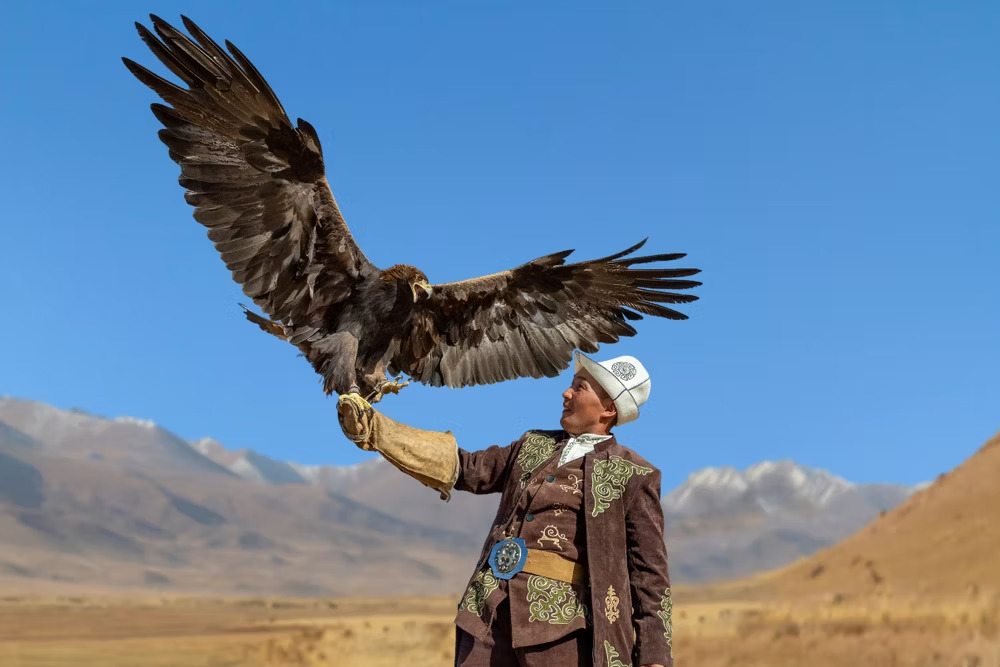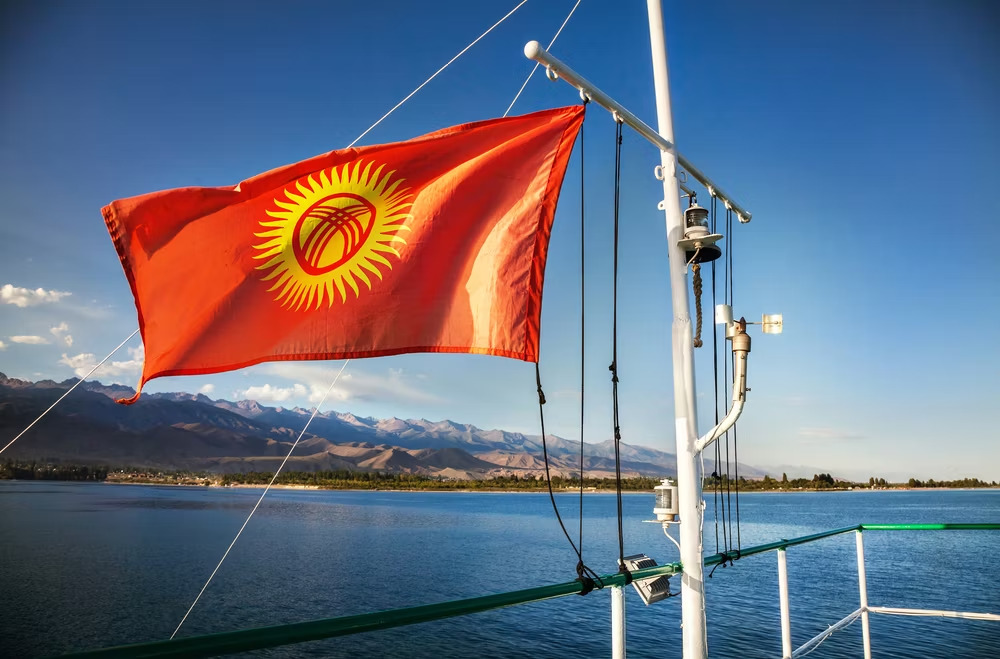Lake Issyk-Kul is the second-largest alpine lake in the world and one of the key attractions of Central Asia.
Issyk-Kul is perhaps the greatest tourist attraction of the forgotten Central Asian country of Kyrgyzstan. It is one of the largest alpine lakes in the world. The lake is somewhat salty – which stops it from freezing during the cold Central Asian winters (it has a salinity of only around 0.6% – much less than the 3.5% salinity normally found in the world’s oceans).
Kyrgyzstan is one of the pearls of Central Asia, just waiting to be discovered by international travelers. Lake Issyk-Kul is one of the largest alpine lakes in the world (Lake Tahoe is the largest alpine lake in the United States).

Why Issyk-Kul Is One Of The World’s Most Remarkable Alpine Lakes
Issyk-Kul is an alpine lake that sits at a loft at an altitude of 1,607 meters or 5,272 feet above sea level. It is an endorheic lake – that is, a lake without an outflow.
- Altitude: 1,607 meters or 5,272 feet
- Length: 182 kilometers or 113 miles
- Width: 60 kilometers or 37 miles (max)
- Surface Area: 6,236 sq km or 2,408 sq miles
Issyk-Kul is regarded as the second-largest alpine lake in the world (the South American Lake Titicaca in Peru and Bolivia is larger – and higher).
At the lake, Issyk-Kul, the development, the tours, and everything else are nothing like what one might expect from North American alpine lake resort destinations like Lake Tahoe. This is a place no one will forget. The historical culture of the Kyrgyz people is nomadic (today, it has a strong Soviet influence). Kyrgyzstan offers a unique peek into a region rarely understood by Westerners.
Why Issyk-Kul Is One Of The World’s Most Remarkable Alpine Lakes
Issyk-Kul is an alpine lake that sits at a loft at an altitude of 1,607 meters or 5,272 feet above sea level. It is an endorheic lake – that is, a lake without an outflow.
- Altitude: 1,607 meters or 5,272 feet
- Length: 182 kilometers or 113 miles
- Width: 60 kilometers or 37 miles (max)
- Surface Area: 6,236 sq km or 2,408 sq miles
Issyk-Kul is regarded as the second-largest alpine lake in the world (the South American Lake Titicaca in Peru and Bolivia is larger – and higher).
At the lake, Issyk-Kul, the development, the tours, and everything else are nothing like what one might expect from North American alpine lake resort destinations like Lake Tahoe. This is a place no one will forget. The historical culture of the Kyrgyz people is nomadic (today, it has a strong Soviet influence). Kyrgyzstan offers a unique peek into a region rarely understood by Westerners.

What To See & Do At Lake Issyk-Kul
Activities at Issyk-Kul include water sports, hiking (the mountains are stunning to hike), visiting the old Soviet bath houses and sanatoriums, and horse riding.
The Kyrgyz people have a nomadic heritage (not unlike the Mongols), although they transitioned to a settled way of life during the Soviet period. Visitors will see yurts (today used mostly as guesthouses) and plenty of horses. Horses are key to the heritage of the Kyrgyz, and it is a common meat and part of their national cuisine.
The lake is flanked by towering mountains, and the landscapes are dramatic. Drive all around the lake and see how the lake is one of the world’s great undiscovered attractions.
Like the (now) Republic of Georgia, Lake Issyl-Kul was a major tourist destination during Soviet times. Lake Issyk-Kul has numerous Soviet-period sanitoria (these are worth visiting in themselves – a Soviet health resort is very different from an English-world equivalent). The sanitoria are mostly clustered around the town of Cholpon-Ata. The period following the collapse of the Soviet Union was very difficult for these sanitoria, and while many remain open, it is easy to see they have seen better times.

What To Know About Visiting Kyrgyzstan & Lake Issyl-Kul
The Central Asian nation of Kyrgyzstan is one of the visitor-friendly countries in the region (the Central Asian countries are very much worth visiting). All the Central Asian countries offer something unique (although Turkmenistan is very difficult to visit).
Kyrgyzstan is visa-free for all Western passport holders. The capital and largest city is Bishkek (a key stop off on the old Silk Road). Discover more of the ancient Silk Road by visiting neighboring Uzbekistan and the eye-watching architecture in Bukhara and Samarkand.
What To Know About Visiting Kyrgyzstan & Lake Issyl-Kul
The Central Asian nation of Kyrgyzstan is one of the visitor-friendly countries in the region (the Central Asian countries are very much worth visiting). All the Central Asian countries offer something unique (although Turkmenistan is very difficult to visit).
Kyrgyzstan is visa-free for all Western passport holders. The capital and largest city is Bishkek (a key stop off on the old Silk Road). Discover more of the ancient Silk Road by visiting neighboring Uzbekistan and the eye-watching architecture in Bukhara and Samarkand.
The culture, language, and heritage of Kyrgyzstan are somewhat similar to neighboring Kazakhstan – although Kyrgyzstan tends to preserve its traditional way of life more than its larger neighbor. Kyrgyzstan is generally considered a safe country to visit (in July 2023, the US Department of State listed it as Level 1 – “Exercise normal safety precautions”).
- Visa Policy: Visa Free For 2 Months
- Capital: Bishkek
There are tours of Kyrgyzstan that include tours to Issyk-Kul. For those who would like to make their own way there, there are plenty of buses (and van-buses called ‘marshrutkas’) from Bishkek to Lake Issyl-Kul. It is helpful for those traveling independently in Kyrgyzstan to learn some basic Russian to get around.

One of the best sources of information for visiting Central Asia is Caravanistan, and organized tours are offered by Central Asian Guide.
The best time to visit Lake Issyk-Kul is during the summer months (the winters can be bitterly cold). There are plenty of accommodations and guest houses along its shores to select from any time of year.
Source : THETRAVEL










